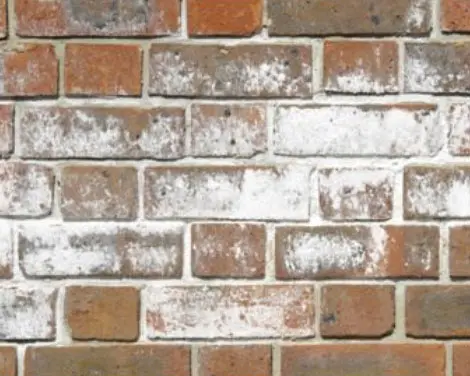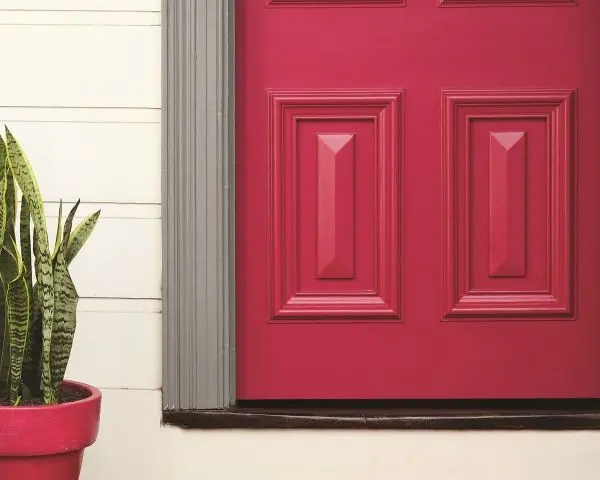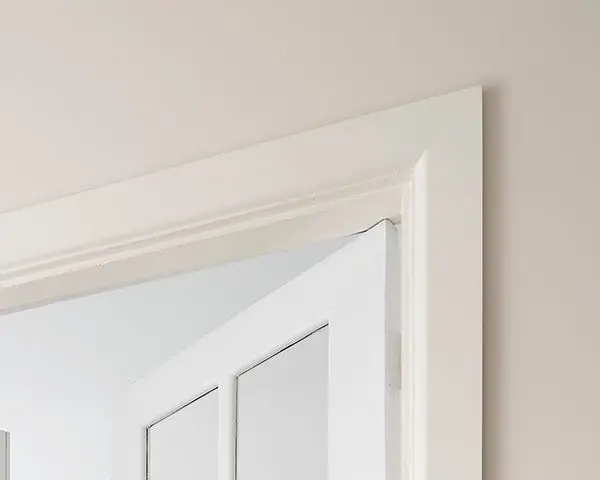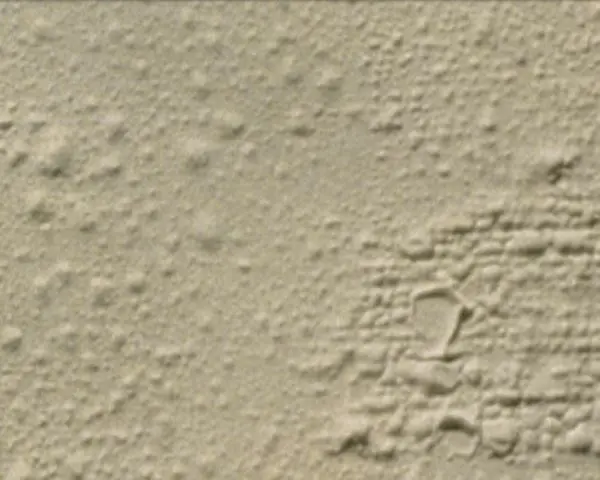Paint touch up
Learn about everything you need to know in order to correctly touch up paint jobs by downloading the Dulux Technical Advice PDF.
What is a touch-up?
“Touch up” is the term most commonly used to describe the re-coating of very small localised areas of a newly painted surface, in order to conceal repairs to minor damage or to cover up small surface defects, such as scuff marks, that have occurred shortly after the painting process was completed.
Whilst the property owner and/or the builder will place considerable importance on achieving a blemish free surface, it is not always possible to achieve an invisible touch-up.
Small blemishes that may still be present will be highlighted or slight variations across the surface will be accentuated by the shadows that are cast when natural or artificial light hitting the painted surface is viewed at low or acute angles (glancing light).
Why?
The main problems associated with touch-up of wall and ceiling paints, from a viewing perspective are as follows:
Gloss difference: This is most evident when the paintwork is viewed at low or acute angles especially with head-on directional lighting. For example, looking along the wall towards the light in a long hallway.
The gloss difference is often related to the difference in film build. If the film thickness of the original paint was insufficient to fully seal the substrate, then its sheen level is likely to be flatter than normal. The extra paint that is applied during the touch-up may deliver a correct but slightly higher sheen level.
Surface texture: The difference in surface texture between the original and touch-up paint is often the major cause of touch-up problems. Different application methods and techniques can produce a slightly different surface texture. The degree of the roller stipple may vary or a different appearance between roller and brush marks may be evident, especially under critical lighting conditions.
Colour difference: A colour variation between the original coat and the touch-up may present a problem, especially with deeper colours which tend to highlight any gloss or texture variations.
Opacity: The ability of paint to obliterate the background colour of the substrate is called “hiding power” or opacity. If the original coat was applied too thin or was overspread and failed to fully hide the surface below, the observed or perceived colour may not be the same. If full hiding is delivered to the repaired area by the touch-up coat, it is possible that it will stand out as having a different colour.
How does it occur?
It is not feasible to achieve a perfect match when fresh paint is applied to the same paint that has been adversely affected by in-service conditions such as weather, wear and soiling.
Touch-ups are often expected to be carried out when coatings on surfaces recently painted by a professional painter get damaged by other tradesmen working on the same site or in the same location.
The appearance of the existing painted surface has now been compromised and this can be difficult to manage if the painter experiences any issues in readily achieving invisible touch-ups.
Unless specifically stated in a contract, the professional painter is not specifically responsible for damage caused by others nor should they be under any obligation to attempt touch-up or provide other forms of repair to rectify this damage. This can however be covered by a separate remuneration agreement between both parties or as an ‘extra’ to the main contract.
(Ref: AS/NZS 2311 Clause 9.2.1.5)
Solution
Firstly, the area to be touched-up needs to be clean and dry.
Achieving a touch-up that is invisible under all or most lighting and viewing conditions requires application of the same sample of paint that was originally applied to the surface.
In addition, the application equipment used (brush or roller sleeve) should be the same as those used for the original application, as should the equipment loading, the speed, pressure and direction of application.
Alternatively, combined application methods may be used, such as brushing to apply paint to the affected area followed by laying-off with a dampened but unloaded roller to provide a match to the texture of the surrounding area.
The relative ease of touching-up generally increases as the gloss level of the paint decreases. This is consistent with the general principle that flatter paints conceal surface irregularities better because they scatter the light more effectively. (Ref: AS/NZS 2311 Section 6.8).
Quality or invisibility of touch-up are not a matter of paint performance, but are one of skill and technique. If the same sample of paint is used, applied with the same equipment, loading, technique, pressure, direction of lay-off and preferably by the same painter, an invisible touch-up can be expected. However, it cannot be guaranteed.
In some situations, performing an effective touch-up may be too difficult since it might be necessary to repaint the entire affected surface, which is a costly and time consuming exercise.
Prevention
Damage to applied coatings by other tradesmen is the joint responsibility of the tradesperson(s), supervisors and job planners involved. If damage is unavoidable, painting should be rescheduled to a later stage.
Neither the paint nor the professional painter should be held responsible for rectifying damage (at their own cost) brought about by others negligence, lack of care or poor work practice. The people responsible need to be held accountable for providing acceptable restoration of the original paintwork, by whatever means is deemed appropriate, including complete repaint of the affected surface when necessary.
The probability of achieving an invisible touch-up will decrease as the number of deviations from the original application conditions increase. If touch-ups are invisible at some viewing angles but visible at other viewing angles, this indicates that they do not have the same (microscopic) surface texture as the surrounding areas of the original paintwork. Therefore application conditions used for touch-up were clearly different to those employed when then original paintwork was done.
The easiest coating to touch-up is the one that was applied properly in the first instance. Ideal conditions include a level, clean, sealed surface with sufficient film thickness to give full opacity and colour.
The general principle that flatter paints conceal surface irregularities better because they scatter the light more effectively than higher gloss levels means that the ease of touch-up is enhanced when flatter paints are employed.
Recommended touch-up technique
In order to overcome the main problems associated with an effective touch-up of paints (above), the professional painter should adhere to the following steps:
Use the same paint that was used originally to minimise any colour difference. Pastel colours are more forgiving than deeper colours.
Minimise gloss and opacity variations by applying only enough paint to cover the damaged area. Final sheen level may take several days to fully develop as the paint cures.
Minimise surface texture differences by using the same type of roller sleeve when touching-up as was used for the original paintwork, especially the same nap length.
Do not use a brush to touch-up rolled areas (the brush marks will be visible and will cause a gloss difference).
Use combined application methods, such as brushing to apply paint to the affected area followed immediately by laying-off with a dampened, but unloaded roller to provide a match to the texture of the surrounding area.
Note: It is not recommended using a fresh or new can of paint purchased weeks or months after the original paint work was completed, as small batch-to-batch variations can occur and the colour may be marginally different yet still within specification tolerances. It will therefore be necessary to repaint the entire surface to hide these unsightly repairs and unsuccessful touch-ups.
Reference
Further information on this topic can be found in the Australian Standard AS/NZS 2311 “The Painting of Buildings” Section 6.8 and Clause 9.2.1.5.
Related Technical Advice
Efflorescence is the deposit of crusty white mineral salts that appear on a masonry surface such as concrete, render, brick or mortar.
Discover the differences between water-based and oil-based enamel paints.
All water-based paints undergo a “drying process” involving two distinct phases, evaporation and coalescence.
Find out more about issues and solutions to blistering caused by Hydrostatic pressure.
Get detailed information about the physical and chemical properties of our products.
Advice for those challenges that arise in your busy and varied days.
Browse Dulux specifications, product datasheets, substrate information and safety data sheets.



